Weiheng Jiang
Transfer-based Adversarial Poisoning Attacks for Online (MIMO-)Deep Receviers
Sep 04, 2024Abstract:Recently, the design of wireless receivers using deep neural networks (DNNs), known as deep receivers, has attracted extensive attention for ensuring reliable communication in complex channel environments. To adapt quickly to dynamic channels, online learning has been adopted to update the weights of deep receivers with over-the-air data (e.g., pilots). However, the fragility of neural models and the openness of wireless channels expose these systems to malicious attacks. To this end, understanding these attack methods is essential for robust receiver design.In this paper, we propose a transfer-based adversarial poisoning attack method for online receivers.Without knowledge of the attack target, adversarial perturbations are injected to the pilots, poisoning the online deep receiver and impairing its ability to adapt to dynamic channels and nonlinear effects. In particular, our attack method targets Deep Soft Interference Cancellation (DeepSIC)[1] using online meta-learning.As a classical model-driven deep receiver, DeepSIC incorporates wireless domain knowledge into its architecture. This integration allows it to adapt efficiently to time-varying channels with only a small number of pilots, achieving optimal performance in a multi-input and multi-output (MIMO) scenario.The deep receiver in this scenario has a number of applications in the field of wireless communication, which motivates our study of the attack methods targeting it.Specifically, we demonstrate the effectiveness of our attack in simulations on synthetic linear, synthetic nonlinear, static, and COST 2100 channels. Simulation results indicate that the proposed poisoning attack significantly reduces the performance of online receivers in rapidly changing scenarios.
Composite Time-Frequency Analysis and Siamese Neural Network based Compound Interference Identification for Hopping Frequency System
Jul 21, 2021
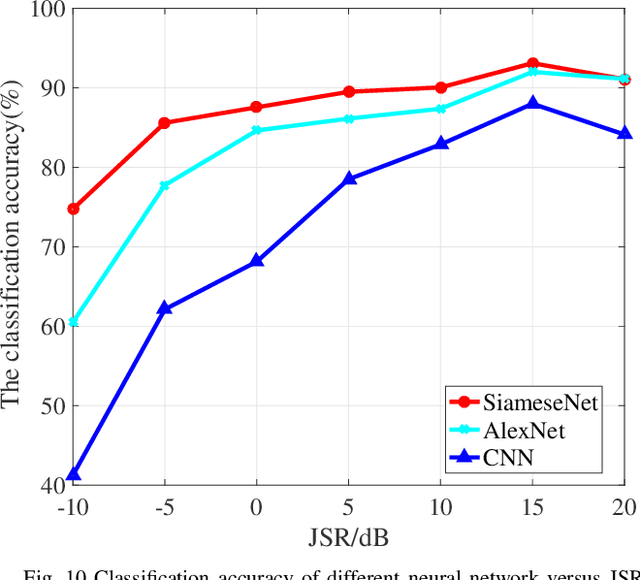
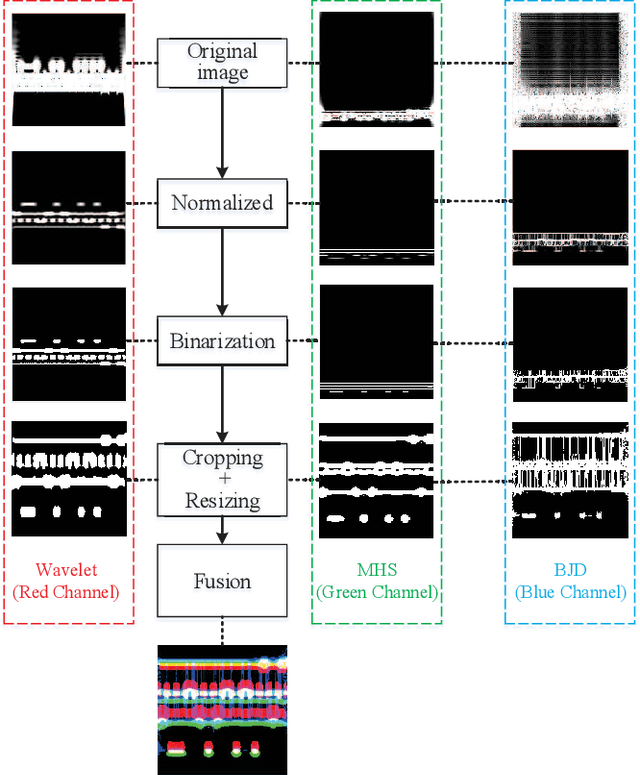
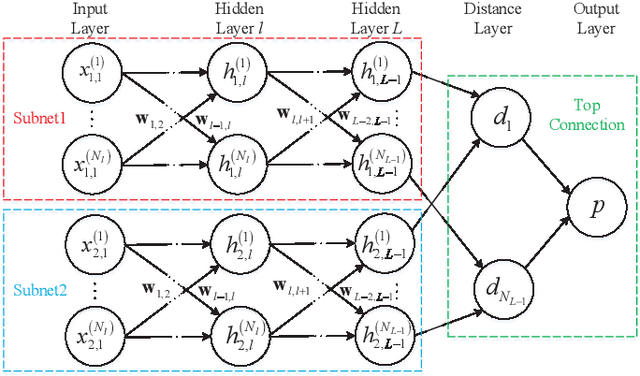
Abstract:In a hostile environment, interference identification plays an important role in protecting the authorized communication system and avoiding its performance degradation. In this paper, the interference identification problem for the frequency hopping communication system is discussed. Considering presence of multiple and compound interference in the frequency hopping system, in order to fully extracted effective features of the interferences from the received signals, a composite time-frequency analysis method based on both the linear and bilinear transform is proposed. The time-frequency spectrograms obtained from the time-frequency analysis are constructed as matching pairs and input into the deep neural network for identification. In particular, the Siamese neural network is adopted as the classifier to perform the interference identification. That is, the paired spectrograms are input into the two sub-networks of the Siamese neural network to extract the features of the paired spectrograms. The Siamese neural network is trained and tested by calculating the gap between the generated features, and the interference type identification is realized by the trained Siamese neural network. The simulation results confirm that the proposed algorithm can obtain higher identification accuracy than both traditional single time-frequency representation based approach and the AlexNet transfer learning or convolutional neural network based methods.
Joint Transmit Precoding and Reflect Beamforming Design for IRS-Assisted MIMO Cognitive Radio Systems
Feb 02, 2021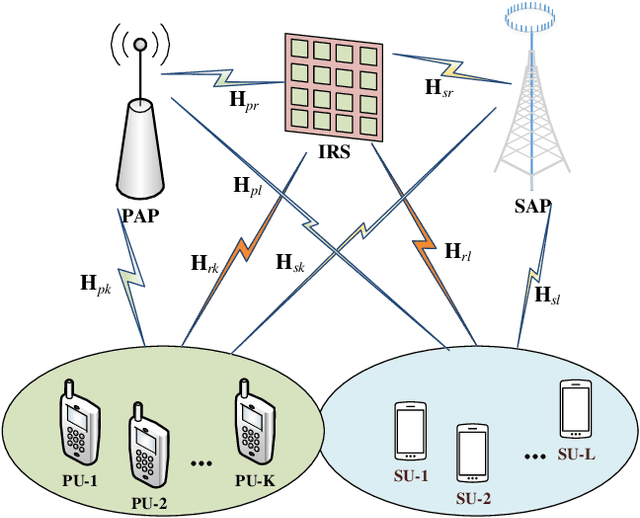
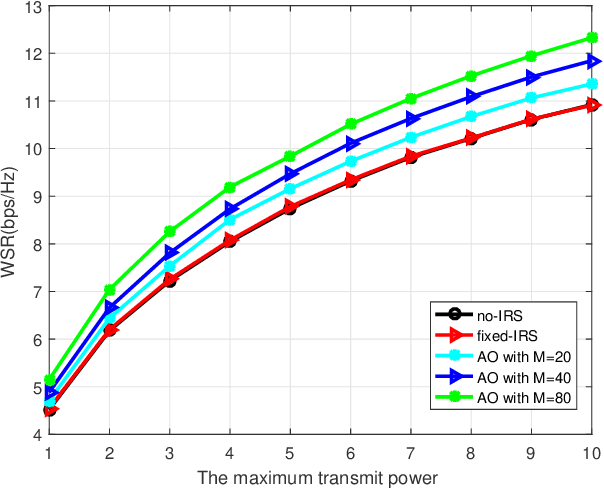
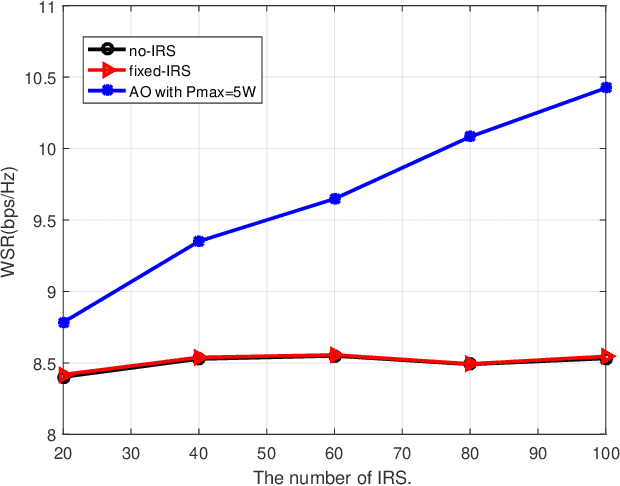
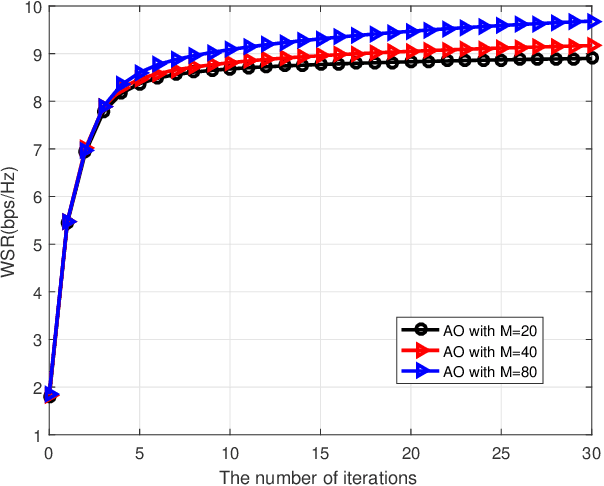
Abstract:Cognitive radio (CR) is an effective solution to improve the spectral efficiency (SE) of wireless communications by allowing the secondary users (SUs) to share spectrum with primary users (PUs). Meanwhile, intelligent reflecting surface (IRS) has been recently proposed as a promising approach to enhance SE and energy efficiency (EE) of wireless communication systems through intelligently reconfiguring the channel environment. In this paper, we consider an IRS-assisted downlink CR system, in which a secondary access point (SAP) communicates with multiple SUs without affecting multiple PUs in the primary network and all nodes are equipped with multiple antennas. Our design objective is to maximize the achievable weighted sum rate (WSR) of SUs subject to the total transmit power constraint at the SAP and the interference constraints at PUs, by jointly optimizing the transmit precoding at the SAP and the reflecting coefficients at the IRS. To deal with the complex objective function, the problem are reformulated by employing the well-known weighted minimum mean-square error (WMMSE) method and an alternating optimization (AO)-based algorithm is proposed. Furthermore, a special scenario with only one PU is considered and an AO-based algorithm with lower complexity is proposed. Finally, some numerical simulations have been done to demonstrate that the proposed algorithm outperforms other benchmark schemes.
Time-Frequency Analysis based Blind Modulation Classification for Multiple-Antenna Systems
Apr 01, 2020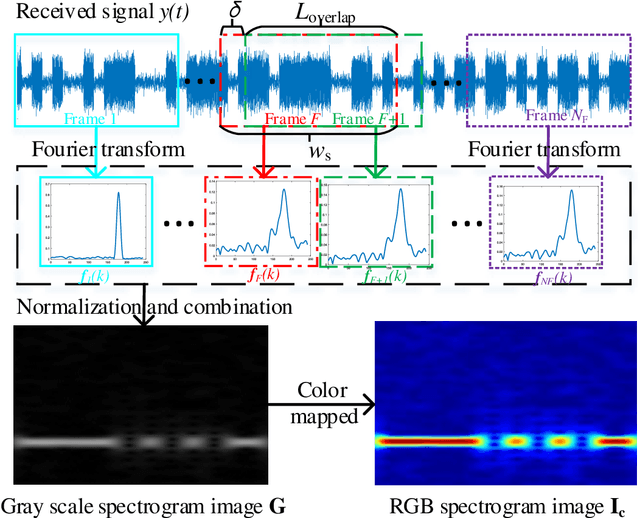
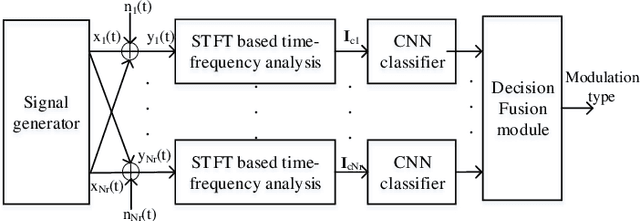
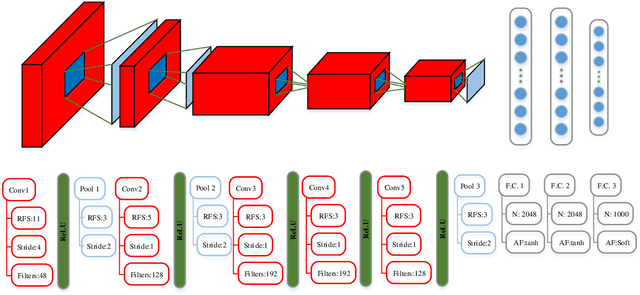
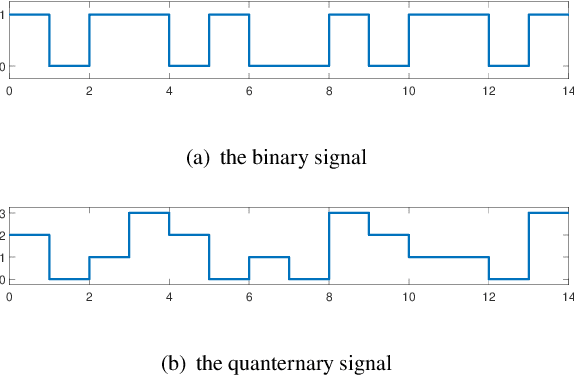
Abstract:Blind modulation classification is an important step to implement cognitive radio networks. The multiple-input multiple-output (MIMO) technique is widely used in military and civil communication systems. Due to the lack of prior information about channel parameters and the overlapping of signals in the MIMO systems, the traditional likelihood-based and feature-based approaches cannot be applied in these scenarios directly. Hence, in this paper, to resolve the problem of blind modulation classification in MIMO systems, the time-frequency analysis method based on the windowed short-time Fourier transform is used to analyse the time-frequency characteristics of time-domain modulated signals. Then the extracted time-frequency characteristics are converted into RGB spectrogram images, and the convolutional neural network based on transfer learning is applied to classify the modulation types according to the RGB spectrogram images. Finally, a decision fusion module is used to fuse the classification results of all the receive antennas. Through simulations, we analyse the classification performance at different signal-to-noise ratios (SNRs), the results indicate that, for the single-input single-output (SISO) network, our proposed scheme can achieve 92.37% and 99.12% average classification accuracy at SNRs of -4 dB and 10 dB, respectively. For the MIMO network, our scheme achieves 80.42% and 87.92% average classification accuracy at -4 dB and 10 dB, respectively. This outperforms the existing classification methods based on baseband signals.
Monthly electricity consumption forecasting by the fruit fly optimization algorithm enhanced Holt-Winters smoothing method
Aug 14, 2019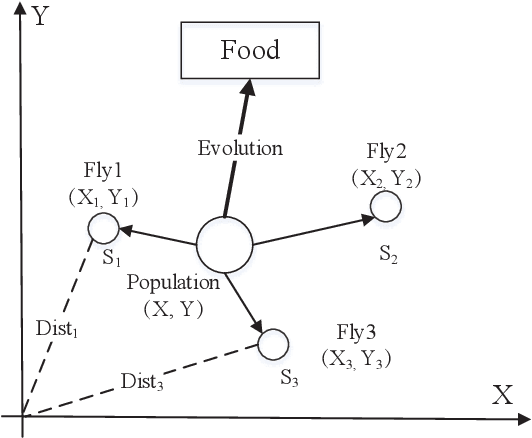
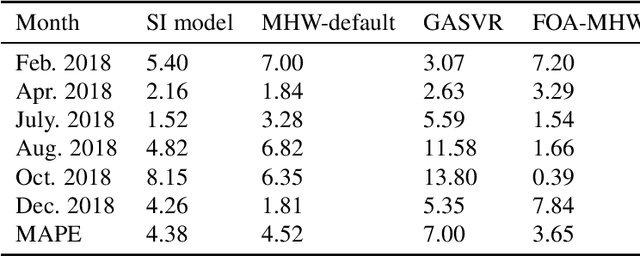

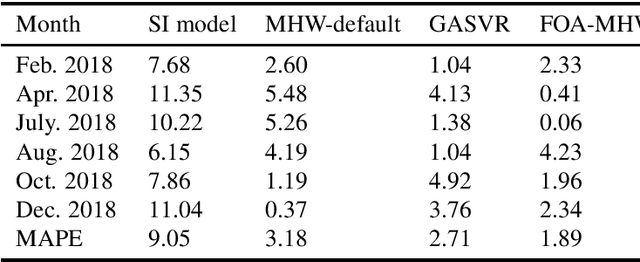
Abstract:The electricity consumption forecasting is a critical component of the intelligent power system. And accurate monthly electricity consumption forecasting, as one of the the medium and long term electricity consumption forecasting problems, plays an important role in dispatching and management for electric power systems. Although there are many studies for this problem, large sample data set is generally required to obtain higher prediction accuracy, and the prediction performance become worse when only a little data is available. However, in practical, mostly we experience the problem of insufficient sample data and how to accurately forecast the monthly electricity consumption with limited sample data is a challenge task. The Holt-Winters exponential smoothing method often used to forecast periodic series due to low demand for training data and high accuracy for forecasting. In this paper, based on Holt-Winters exponential smoothing method, we propose a hybrid forecasting model named FOA-MHW. The main idea is that, we use fruit fly optimization algorithm to select smoothing parameters for Holt-Winters exponential smoothing method. Besides, electricity consumption data of a city in China is used to comprehensively evaluate the forecasting performance of the proposed model. The results indicate that our model can significantly improve the accuracy of monthly electricity consumption forecasting even in the case that only a small number of training data is available.
 Add to Chrome
Add to Chrome Add to Firefox
Add to Firefox Add to Edge
Add to Edge